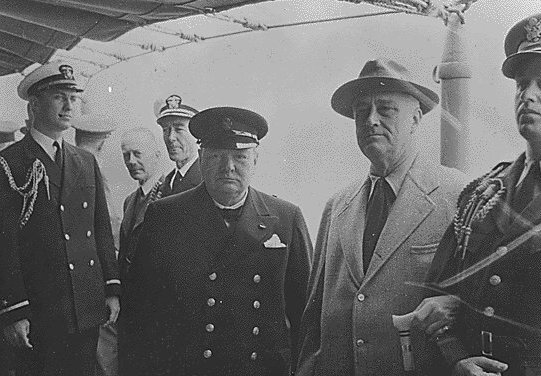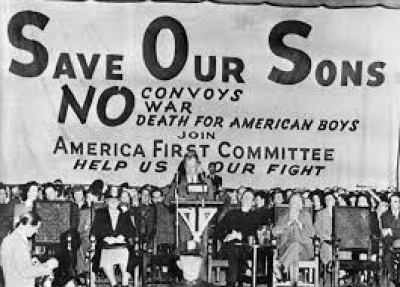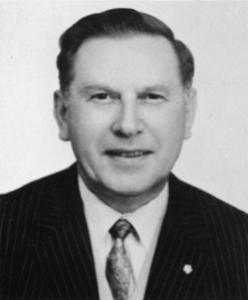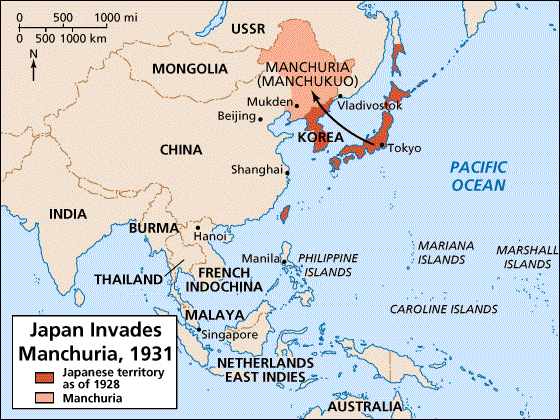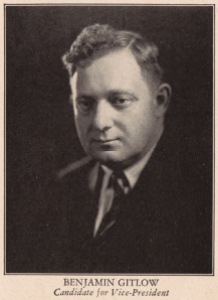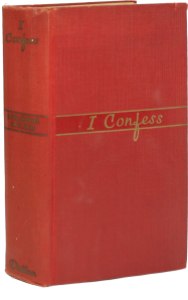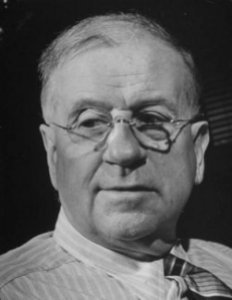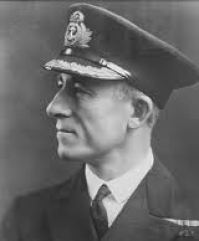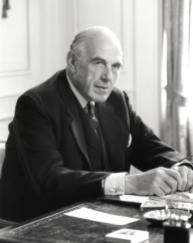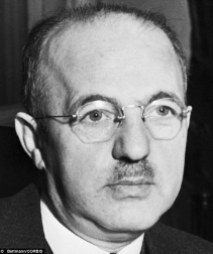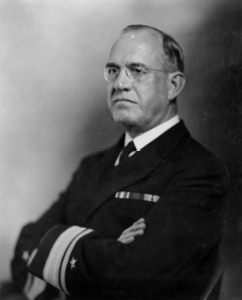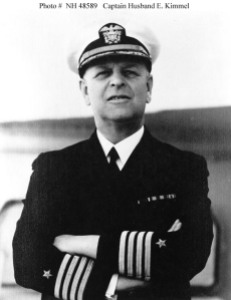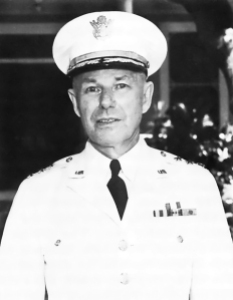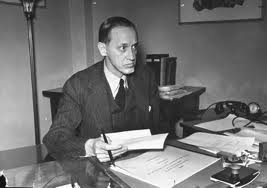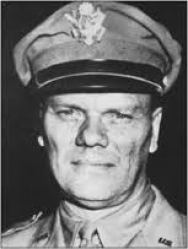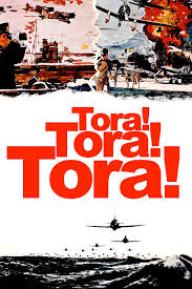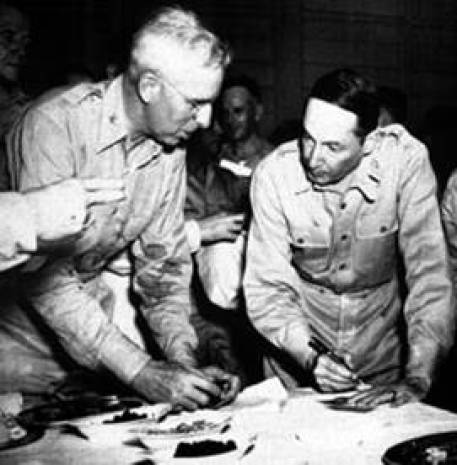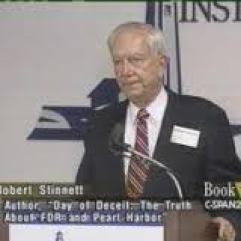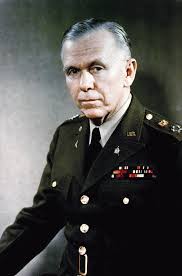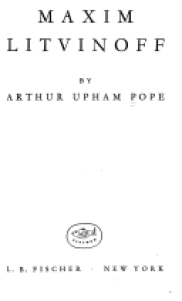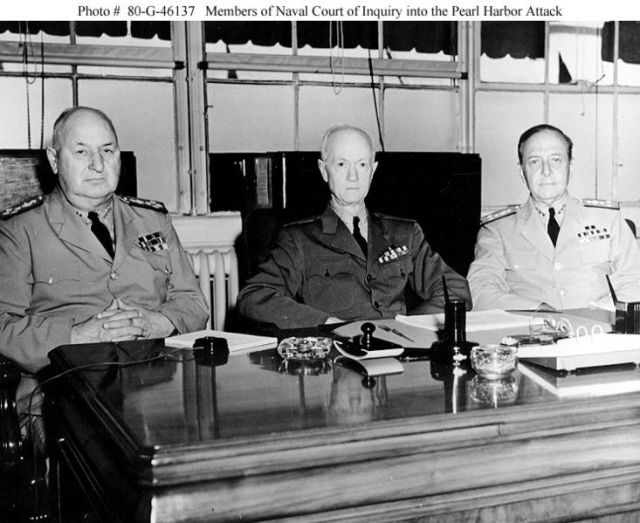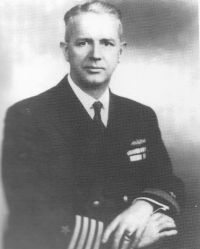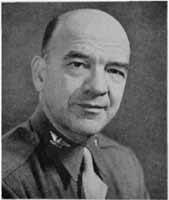Historical
See other Historical Articles
Title: Pearl Harbor: RooseveltÂ’s 9/11
Source:
From The Trenches
URL Source: http://fromthetrenchesworldreport.c ... -harbor-roosevelts-9-11/213441
Published: Dec 7, 2017
Author: James Perloff
Post Date: 2017-12-08 06:49:45 by Deckard
Keywords: None
Views: 2963
Comments: 10
James Perloff False flags do not stand alone. They are better understood – and more credibly explained to skeptics – when seen in history’s context. On the morning of December 7, 1941, Japanese planes, launched from aircraft carriers, attacked the American fleet at Pearl Harbor in Hawaii, sinking or heavily damaging 18 ships (including eight battleships), destroying 188 planes, and leaving over 2,000 servicemen killed. The next day, President Franklin D. Roosevelt denounced this “day of infamy” before Congress, from whom he secured an avid declaration of war. Up until then, however, Americans had overwhelmingly opposed involvement in World War II. They had been thoroughly disillusioned by the First World War: When the Maine sank, the proactive Assistant Secretary of the Navy had been Teddy Roosevelt. After the 1898 Spanish-American War he became governor of New York, and by 1901 was President of the United States. When the Lusitania sank, the Assistant Secretary of the Navy was his distant cousin Franklin D. Roosevelt – who likewise went on to become governor of New York and then President. Just as coincident: during the Lusitania affair, the head of the British Admiralty was yet another cousin of Franklin D. – Winston Churchill. And in a chilling déjà vu, as Pearl Harbor approached, these two men were now heads of their respective states. In a 1940 (election-year) speech, Roosevelt stated typically: “I have said this before, but I shall say it again and again and again: Your boys are not going to be sent into any foreign wars.”2 But privately, the President planned just the opposite: to bring America into the World War as Britain’s ally, exactly as Woodrow Wilson had done in World War I. Roosevelt dispatched his closest advisor, Harry Hopkins, to meet Churchill in January 1941. Hopkins told Churchill: “The President is determined that we [the United States and England] shall win the war together. Make no mistake about it. He has sent me here to tell you that at all costs and by all means he will carry you through, no matter what happens to him – there is nothing he will not do so far as he has human power.”3 William Stephenson, who ran British intelligence operations in the U.S., noted that American-British military staff talks began that same month under “utmost secrecy,” which, he clarified, “meant preventing disclosure to the American public.”4 The President offered numerous provocations to Germany: freezing its assets; occupying Iceland; shipping 50 destroyers to Britain; and having U.S. warships escort Allied convoys. Roosevelt and Churchill hoped to duplicate the success of the Lusitania incident. But the Germans gave them no satisfaction. They knew America’s entry into World War I had shifted the balance of power against them, and they shunned a repetition of that scenario. As Admiral Karl Doenitz, commander of Germany’s U-boat fleet, stated during the Nuremburg trials: A 300 mile safety zone was even granted to America by Germany when international law called for only a three mile zone. I suggested mine fields at Halifax and around Iceland, but the Fuehrer rejected this because he wanted to avoid conflict with the United States. When American destroyers in the summer of 1941 were ordered to attack German submarines, I was forbidden to fight back. I was thus forced not to attack British destroyers for fear there would be some mistake.5 After being pursued by the destroyer USS Greer for more than three hours, the German submarine U-652 fired at (but did not hit) the Greer. President Roosevelt bewailed this to the American public as an unprovoked attack: But most Americans were unmoved. Not even another Lusitania would have motivated them to send their sons to die in another European war. It was going to take a whole cluster of Lusitanias, and since this would not come from the cautious Germans, it could only come from Germany’s Axis partner, Japan. As Interior Secretary Harold Ickes put it in 1941: “For a long time I have believed that our best entrance into the war would be by way of Japan.”6 This required three steps: (1) build anti-Japanese sentiment in America; (2) provoke Japan to the flashpoint of war; (3) set up an irresistible target to serve as a false flag. Americans were subjected to a stream of propaganda depicting Japan as bent on “world conquest” even though it is smaller than Montana. In the wartime government-produced film, Our Enemy: The Japanese, narrator Joseph Grew (CFR) told the public the Japanese believed it was the “the right and destiny of Japan’s emperors to rule the whole world . . . to destroy all nations and peoples which stand in the way of its fulfillment. . . . [Their] national dream is to see Tokyo established as the capital of the world . . . . world conquest is their national obsession.” Grew neglected to mention that Japan had been a closed isolationist country until Commodore Perry compelled them to sign a trade agreement under threat of U.S. naval bombardment. Perry was the father-in-law of August Belmont, the Rothschilds’ leading financial agent in America during the 19th century.7 As proof of “Japan’s plot to conquer the world,” the American press played up Japanese troops entering Manchuria in the 1930s. But the fact that the Soviets had first seized Outer Mongolia and China’s northwestern province of Sinkiang drew no notice. As Dr. Anthony Kubek, chairman of the history department at the University of Dallas, wrote in How the Far East Was Lost: It was apparent to Japanese statesmen that unless bastions of defense were built in Manchuria and Inner Mongolia, Communism would spread through all of North China and seriously threaten the security of Japan. . . . But the Department of State seemed not to regard Japan as a bulwark against Soviet expansion in North China. As a matter of fact, not one word of protest was sent by the Department of State to the Soviet Union, despite her absorption of Sinkiang and Outer Mongolia, while at the same time Japan was censured for stationing troops in China.8 Dr. Kubek’s remarks highlight a policy consistent throughout the Second World War: condemn “fascist aggression” while tolerating – without limit – communistaggression. For example, when the Germans invaded Poland in September 1939, Britain and France declared war on Germany. Yet when the Soviet Union invaded Poland that same month, the West . . . yawned. To those who might contend Japan had no right to enter China to oppose communism, let’s remember that the United States sent its troops around the globe to Vietnam on the principle that stopping communism was in its national interests. By what logic, then, could Japan not oppose communism on its doorstep? A glance at a map shows how close communism was drawing to Japan, having methodically enslaved all the nations embodying the Soviet Union, and it was now boring southward into China. In sending troops to Manchuria and China, Japan was invoking her own version of the Monroe Doctrine. The Soviets, for their part, wanted war between the United States and Japan, knowing that with Japan neutralized, Communism would engulf Asia. In 1935, U.S. Ambassador to Moscow William C. Bullitt sent a dispatch to Secretary of State Cordell Hull: It is . . . the heartiest hope of the Soviet Government that the United States will become involved in war with Japan. . . . The Soviet Union would certainly attempt to avoid becoming an ally until Japan had been thoroughly defeated and would then merely use the opportunity to acquire Manchuria and Sovietize China.9 Benjamin Gitlow, founding member of the U.S. Communist Party, wrote in I Confess (1940): When I was in Moscow, the attitude toward the United States in the event of war was discussed. Privately, it was the opinion of all the Russian leaders to whom I spoke that the rivalry between the United States and Japan must actually break out into war between these two.10 On June 23, 1941, Interior Secretary Ickes wrote in a memo to Roosevelt: There will never be so good a time to stop the shipment of oil to Japan as we now have. . . . There might develop from embargoing of oil such a situation as would make it, not only possible but easy, to get into this war in an effective way. And if we should thus indirectly be brought in, we would avoid the criticism that we had gone in as an ally of communistic Russia. 11 The memo’s date is significant: the day after Germany and her allies (Italy, Hungary, Romania, Finland and Croatia) launched Operation Barbarossa: the invasion of the Soviet Union. Why did Ickes say an oil embargo would make it “easy to get into this war”? The answer lies in an eight-point plan of provocation toward Japan which had been previously drawn up by Lt. Commander Arthur McCollum of Naval Intelligence. The eighth of the eight-step plan was: “Completely embargo all U.S. trade with Japan, in collaboration with a similar embargo imposed by the British Empire.” McCollum’s next sentence was: “If by these means Japan could be led to commit an overt act of war, so much the better.”12 What McCollum, Ickes and Roosevelt envisioned was antagonizing Japan to the point that it would attack the United States. And thus – in the tradition of the Maine and Lusitania – America, as the “innocent victim of unprovoked aggression” – would go to war. Here is how War Secretary Henry Stimson (CFR, Skull and Bones) phrased it in his diary, after meetings with the President that autumn: “We face the delicate question of the diplomatic fencing to be done so as to be sure that Japan is put into the wrong and makes the first bad move – overt move.”13 “The question was how we should maneuver them [the Japanese] into the position of firing the first shot….”14 Between July 26 and August 1, 1941, FDR seized Japanese assets in America, closed the Panama Canal to Japanese shipping, and enacted the sweeping trade embargo that McCollum and Ickes had urged. Britain and the Netherlands followed suit with similar embargoes. For the Japanese, this constituted a death threat. Japan heavily depended on imports for raw materials, for 88 percent of its oil and 75 percent of its food. The timing of these measures was again significant. In July 1941, all reports indicated the Germans and their allies were crushing the Red Army. Hundreds of thousands of Soviet soldiers were surrendering; as they did, many shouted “Stalin kaput!” Stalin himself was nearly paralyzed with fear. He had only fought wars of aggression and was unprepared for defense. If Japan, Germany’s ally, joined Operation Barbarossa from the East, Stalin would be trapped in a vise, and communism – which was an Illuminati creation – destroyed. Roosevelt’s trade embargo guaranteed that Japan would not join Operation Barbarossa, but would instead turn its attention south. No nation can prosecute war without oil. Tanks, trucks, ships and aircraft require it. If Japan attacked Russia through Siberia, there would be no oil to be confiscated. But there was abundant oil to the south, in the Dutch East Indies. And Southeast Asia held many other resources the embargo denied Japan, such as rubber, tin and iron ore. British historian Russell Grenfell, a captain in the Royal Navy, wrote In 1952: No reasonably informed person can now believe that Japan made a villainous, unexpected attack on the United States. An attack was not only fully expected but was actually desired. It is beyond doubt that President Roosevelt wanted to get his country into war, but for political reasons was most anxious to ensure that the first act of hostility came from the other side; for which reason he caused increasing pressure to be put on the Japanese, to a point that no self-respecting nation could endure without resort to arms. Japan was meant by the American President to attack the United States.15 On June 20, 1944, Oliver Lyttelton, Britain’s minister of production, said before the American Chamber of Commerce in London: “America provoked Japan to such an extent that the Japanese were forced to attack Pearl Harbor. It is a travesty on history ever to say that America was forced into war.”16 Why did Lyttelton make this startling accusation (for which he was later compelled to apologize)? Following the U.S. embargo, Japan’s representatives in Washington earnestly negotiated for the embargo’s repeal, to no avail. On November 26, 1941, the State Department delivered an ultimatum to Japan: sanctions would only be lifted if all overseas Japanese troops were withdrawn to Japan. Although the ultimatum or “Hull note” was officially credited to Secretary of State Cordell Hull, it is now known that it was drafted by Assistant Secretary of the Treasury Harry Dexter White, a Soviet operative. The White/Hull ultimatum was a deliberate catch-22. If the Japanese refused it, the embargo would continue, and they would collapse from economic strangulation. If they complied, and withdrew all troops from the mainland, communism would sweep Eastern Asia (exactly as happened after the war, resulting in Communist China, and the Korean and Vietnam wars). The Japanese were thus given a two-headed coin: die by starvation, or die by communism. They decided to reject both options, and fight instead. To have any hope of success in a war against the mighty USA, Japan would need an edge. Franklin D. Roosevelt made sure they got one in the form of attractive bait. In 1940, President Roosevelt decided that the Pacific Fleet should be based indefinitely at Pearl Harbor in Hawaii, instead of its usual berths on the U.S. West Coast. This was a bad idea for many reasons: U.S. Fleet Commander Admiral J. O. Richardson was outraged by Roosevelt’s decision and met with him on October 8, 1940 to protest it. Richardson presented the President with a list of logical reasons why the fleet should not be based in Pearl Harbor. Roosevelt could not rebut these objections and simply said that having the fleet there would exert a “restraining influence on the actions of Japan.”17 Richardson said: “I came away with the impression that, despite his spoken word, the President was fully determined to put the United States into the war if Great Britain could hold out until he was reelected.”18 On February 1, 1941, Richardson was relieved of his command without any explanation. Richardson met with Navy Secretary Frank Knox to inquire about it, and related: “When I saw the Secretary, I said, ‘In all my experience in the Navy, I have never known of a flag officer being detached in the same manner as I, and I feel I owe it to myself to know why.’ The Secretary said the President would send for me and talk the matter over.” However, Roosevelt never sent for Richardson; the only explanation the admiral ever received were these words from Secretary Knox: “The last time you were here you hurt the President’s feelings.”19 Roosevelt’s sole pretext for basing the fleet in Pearl Harbor – that it would deter Japanese aggression – was resoundingly discredited on December 7, 1941. Nevertheless, as we shall see, Roosevelt was never held accountable for his action. All blame was instead leveled at the Navy, especially Richardson’s successor as Pacific Fleet Commander, Admiral Husband Kimmel, who accepted the position believing Washington would notify him of any intelligence pointing to a threat. This trust proved misplaced. As Washington watched Japan prepare for the attack, it kept Kimmel and his army counterpart in Hawaii, General Walter C. Short, well out of its intelligence loop. The Japanese used a code called “Purple” to communicate to their embassies and major consulates throughout the world. Its complexity required that it be enciphered and deciphered by machine. The Japanese considered the code unbreakable, but in 1940 talented U.S. Army cryptanalysts cracked it and devised a facsimile of the Japanese machine. As the result, U.S. intelligence was reading Japanese diplomatic messages, often on a same-day basis. Copies of the deciphered texts, nicknamed “Magic,” were promptly delivered in locked pouches to select individuals, including President Roosevelt, Secretary of State Cordell Hull, Secretary of War Henry Stimson, Army Chief of Staff General George Marshall, and the Chief of Naval Operations, Admiral Harold Stark. Copies also went to Harry Hopkins, FDR’s shadowy advisor who held no cabinet position.20 (It is worth digressing for a paragraph about Hopkins, who lived in the White House; he has been aptly compared to Woodrow Wilson’s Wall Street controller, Edward Mandell House, who also lived in the White House. Like House, Hopkins acted as a special emissary, paying visits to Churchill and Stalin. After the war, it was revealed that as head of Lend-Lease, he secretly shipped both the materials and blueprints for the atomic bomb to the Soviet Union. This was documented by Lend-Lease expediter George Racey Jordan in From Major Jordan’s Diaries. Some may find interesting John T. Flynn’s remarks in The Roosevelt Myth on the favors bestowed upon Hopkins by British press tycoon Lord Beaverbrook and bankster Bernard Baruch on the occasion of Hopkins’s third wedding.) Although Hopkins had access to “Magic” intercepts, our commanders in Hawaii did not. And what did these intercepts reveal? In the 1970 movie Tora, Tora, Tora, a Hollywood depiction of the events surrounding Pearl Harbor, Japan’s ambassadors are shown presenting their message breaking relations (meaning war) to Secretary of State Cordell Hull, after the attack on Hawaii, and Hull reacts with surprise and outrage. In reality, however, Hull was not shocked at all. On the previous day (December 6), he had already read the translated intercept of Japan’s declaration – 13 parts of the 14-part message – as had President Roosevelt. An additional warning came via the so-called “Winds” message. A November 18th intercept indicated that, if a break in U.S. relations was forthcoming, Tokyo would issue a special radio warning. This would not be in the Purple code, as it was intended to reach consulates and lesser agencies of Japan not equipped with the code or one of its machines. The message, to be repeated three times during a weather report, was “Higashi no kaze ame,” meaning “East wind, rain.” “East wind” signified the United States; “rain” signified diplomatic split (war). This prospective message was deemed so significant that U.S. radio monitors were constantly watching for it, and the Navy Department typed it up on special reminder cards. On December 4th, “Higashi no kaze ame” was broadcast and picked up by Washington intelligence. During 1941, the Roosevelt administration also received several personal warnings regarding Pearl Harbor: As soon as I received the document I telephoned Secretary of State Cordell Hull and told him what I had. Secretary Hull directed me not to let anyone know about the map and stated that he would call me as soon as he talked to President Roosevelt. In about an hour he telephoned to say that he had talked to Roosevelt and they agreed that it would be very serious if any information concerning this map reached the news services . . . I told him it was a grave responsibility to withhold such vital information from the public. The Secretary assured me that he and Roosevelt considered it essential to national defense.27 In his book Day of Deceit: The Truth about FDR and Pearl Harbor (2000), Robert Stinnett proved, from documents obtained through the Freedom of Information Act, that Washington was not only deciphering Japanese diplomatic messages, but naval dispatches also. It had long been presumed that as the Japanese fleet approached Pearl Harbor, it maintained complete radio silence. This was not the case. The fleet observed discretion, but not complete silence. U.S. Naval Intelligence intercepted and translated numerous dispatches, which President Roosevelt had access to through his routing officer, Lieutenant Commander McCollum, who had also authored the original eight-point plan of provocation. The most significant message was sent by Admiral Yamamoto to the Japanese First Air Fleet on November 25, 1941: The task force, keeping its movement strictly secret and maintaining close guard against submarines and aircraft, shall advance into Hawaiian waters, and upon the very opening of hostilities shall attack the main force of the United States fleet and deal it a mortal blow. The first air raid is planned for the dawn of x-day. Exact date to be given by later order.28 Here is more on the interception of this message: MSM historians have traditionally censured the Hawaiian commanders, Admiral Kimmel and General Short, for failing to detect the approaching Japanese carriers. What goes unsaid: Washington denied them the means to do so. During the week before December 7th, naval aircraft searched more than two million square miles of the Pacific29 – but never saw the Japanese force. This is because Kimmel and Short had only enough planes to survey less than one-third of the 360-degree arc around them, and intelligence had advised (incorrectly) that they should concentrate on the southwest. There were not enough trained surveillance pilots. Many of the reconnaissance craft suffered from lack of spare parts. Repeated requests to Washington for additional patrol planes were turned down. As George Morgenstern noted in Pearl Harbor: The Story of the Secret War: “While the Hawaiian air commanders were clamoring for planes to safeguard the base, 1,900 patrol planes were being lend-leased to foreign countries between February 1 and December 1, 1941. Of these, 1,750, or almost ten times the number which would have rendered Oahu safe, went to Great Britain.”30 Rear Admiral Edward T. Layton, who served at Pearl Harbor, stated: “There was never any hint in any intelligence received by the local command of any Japanese threat to Hawaii. Our air defenses were stripped on orders from the army chief himself. Of the twelve B-17s on the island, only six could be kept in the air by cannibalizing the others for spare parts.”31 Radar, too, was insufficient. And when General Short attempted to build a radar station on Mount Haleakala, Harold Ickes’ Interior Department withheld permission, stating that it would harm the beauty of the landscape.32 It was clear, of course, that once disaster struck Pearl Harbor, there would be demands for accountability. Washington seemed to artfully take this into account by sending an ambiguous “war warning” to Kimmel, and a similar one to Short, on November 27th. This has been used for years by Washington apologists to allege that the commanders should have been ready for the Japanese. Indeed, the message began conspicuously: “This dispatch is to be considered a war warning.” However, it went on to state: “The number and equipment of Japanese troops and the organizations of naval task forces indicates an amphibious expedition against the Philippines, Thai or Kra Peninsula, or possibly Borneo.” None of these areas were closer than 5,000 miles to Hawaii (that is further than the distance from New York to Moscow). No threat to Pearl Harbor was hinted at. It ended with the words: “Continental districts, Guam, Samoa take measures against sabotage.” The message further stated that “measures should be carried out so as not repeat not to alarm civil population.” Both commanders reported the actions taken to Washington. Short followed through with sabotage precautions, bunching his planes together (which hinders saboteurs but makes ideal targets for bombers), and Kimmel stepped up air surveillance and sub searches. If their response to the “war warning” was insufficient, Washington said nothing. The next day, a follow-up message from Marshall’s adjutant general to Short warned only: “Initiate forthwith all additional measures necessary to provide for protection of your establishments, property, and equipment against sabotage, protection of your personnel against subversive propaganda and protection of all activities against espionage.”33 Short testifies before Congress after the war: On December 1, Naval intelligence sent Kimmel its fortnightly intelligence summary entitled “The Japanese Naval Situation.” It stated: “Major capital ship strength remains in home waters, as well as the greatest portion of the carriers.”34 Contrast that to the diary of Captain Johann Ranneft, the Dutch naval attaché in Washington, who was awarded the Legion of Merit for his services to America. Ranneft recorded that on December 2nd, he visited the Office of Naval Intelligence (ONI). Ranneft inquired about the Pacific. An American officer, pointing to a wall map, said, “This is the Japanese Task Force proceeding East.” It was a spot midway between Japan and Hawaii. On December 6th, Ranneft returned and asked where the Japanese carriers were. He was shown a position on the map about 300-400 miles northwest of Pearl Harbor. Ranneft wrote: “I ask what is the meaning of these carriers at this location; whereupon I receive the answer that it is probably in connection with Japanese reports of eventual American action. . . . I myself do not think about it because I believe that everyone in Honolulu is 100 percent on the alert, just like everyone here at O.N.I.”35 Admiral Kimmel testifiying after the war: On the morning of the Sunday the 7th, the final portion of Japan’s lengthy message to the U.S. government (rupturing relations, effectively declaring war) was intercepted and decoded. Tokyo added two special directives to its envoys. The first, which the message called “very important,” was to deliver the statement at 1 PM. The second directive ordered that the last copy of code, and the machine that went with it, be destroyed. The gravity of this was not lost in the Navy Department: Japan had a long history of synchronizing attacks with breaks in relations (e.g., in the Russo-Japanese War of 1904-5, it had attacked Port Arthur on the same day it notified Russia that it was declaring war). Sunday was an abnormal day to deliver diplomatic messages — but the best for trying to catch U.S. armed forces at low vigilance; and 1 PM in Washington was shortly after dawn in Hawaii. Admiral Stark, Chief of Naval Operations, arrived at his office at 9:25 AM. He was shown the message and important delivery time. One junior officer pointed out the possibility of an attack on Hawaii; another urged that Kimmel be notified. But Stark refused; he did nothing all morning. Years later, he told the press that his conscience was clear concerning Pearl Harbor because all his actions had been dictated by a “higher authority.”36 As Chief of Naval Operations, Stark had only one higher authority: Roosevelt. In the War Department, where the statement had also been decoded, Colonel Rufus Bratton, head of Army Intelligence’s Far Eastern section, understood the message’s terrible significance. But the head of intelligence told him nothing could be done until Chief of Staff General Marshall arrived. Bratton tried reaching Marshall at home, but was repeatedly told the general was out horseback riding. The horseback ride turned out to be a very long one. When Bratton finally reached Marshall by phone and explained the emergency, Marshall said he would come to the War Department. Marshall took 75 minutes to make the 10-minute drive. He didn’t come to his office until 11:25 AM – an extremely late hour with the nation on the brink of war. He perused the Japanese message and was shown the delivery time. Every officer in Marshall’s office agreed these indicated an attack in the Pacific at about 1 PM EST. The general finally agreed that Hawaii should be alerted, but time was running out. Marshall had only to pick up his desk phone to reach Pearl Harbor on the transpacific line. Doing so would not have averted the attack, but at least our men would have been at their battle stations. Instead, the general wrote a dispatch, which was not even marked “priority” or “urgent.” After it was encoded it went to the Washington office of Western Union. From there it was relayed to San Francisco. From San Francisco it was transmitted via RCA commercial radio to Honolulu. General Short received it six hours after the attack. Two hours later it reached Kimmel. One can imagine their exasperation on reading it. Despite all the evidence accrued through Magic and other sources during the previous months, Marshall had never warned Hawaii. To historians – ignorant of that classified evidence – it would appear the general had tried to save Pearl Harbor, “but alas, too late.” Similarly, FDR sent a last-minute plea for peace to Emperor Hirohito. Although written a week earlier, he did not send it until the evening of December 6th.37 It was to be delivered by Ambassador Grew, who would be unable to receive an audience with the emperor before December 8th. Thus the message could not conceivably have forestalled the attack – but posterity would think that FDR, too, had made “a valiant, last effort.” As for Marshall’s notorious “horseback ride” which allegedly prevented him from warning Pearl Harbor in time, that cover story was unintentionally blown by Arthur Upham Pope, in his 1943 biography of Maxim Litvinoff, the Soviet ambassador to the United States. Litvinoff arrived in Washington on the morning of December 7th, 1941 – a highly opportune day to seek additional aid for the Soviets – and, according to Pope, was met at the airport that morning by General Marshall. Pearl Harbor’s secrets had been successfully preserved before the fact – but what about after? Many people around the nation, including some vocal congressmen, demanded to know why America had been caught off guard. President Roosevelt said he would appoint an investigatory commission. Supreme Court Justice Owen Roberts – a pro-British internationalist friendly with FDR – was selected to head it. Also appointed to the group: Major General Frank McCoy, General George Marshall’s close friend for 30 years; Brigadier General Joseph McNarney, who was on Marshall’s staff and chosen on his recommendation; retired Rear Admiral Joseph Reeves, whom FDR had given a job in Lend-Lease; and Admiral William Standley, a former fleet commander. Only the last seemed to have no obvious fraternity with the Washington set. The commission conducted only two to three days of hearings in Washington. Admiral Standley, arriving late, was startled by the inquiry’s chummy atmosphere. Admiral Harold Stark and General Marshall were asked no difficult or embarrassing questions. Furthermore, all testimony was taken unsworn and unrecorded – an irregularity that, at Standley’s urging, was corrected. The commission then flew to Hawaii, where it remained 19 days. When Admiral Kimmel was summoned, he brought a fellow officer to act as counsel. Justice Roberts disallowed this on grounds that the investigation was not a trial, and the admiral not a defendant. Because Kimmel and General Walter Short were not formally “on trial,” they were also denied all traditional rights of defendants: to ask questions and cross-examine witnesses. Kimmel was also shocked that the proceeding’s stenographers – one a teenager, the other with almost no court experience – omitted much of his testimony and left other parts badly garbled. Permission to correct the errors – other than adding footnotes to the end of the commission’s report – was refused.38 The Roberts Commission laid all blame for Pearl Harbor on the Hawaiian commanders: they had underestimated the import of the November 27th warning; they had not taken sufficient defensive or surveillance actions; they were guilty of “dereliction of duty.” On the other hand, it said, Stark and Marshall had discharged their duties in exemplary fashion. Remarkably, the report’s section declaring this was first submitted to Stark and Marshall for revisions and approval. Admiral Standley dissented with the findings but did not write a minority opinion after being told that doing so might jeopardize the war effort by lowering the nation’s confidence in its leaders. Standley later called Roberts’s handling of the investigation “as crooked as a snake.”39 Admiral Richardson, Kimmel’s predecessor as Pacific Fleet commander, said of the report: “It is the most unfair, unjust, and deceptively dishonest document ever printed by the Government Printing Office.”40 Roberts brought a final copy of the report to FDR. The President read it and delightedly tossed it to a secretary, saying, “Give that in full to the papers for their Sunday editions.”41 The words “dereliction of duty” were emblazoned in headlines across the country. America’s outrage fell on Kimmel and Short. They were traitors, it was said; they should be shot! The two were inundated with hate mail and death threats. The press, with its ageless capacity to manufacture villains, stretched the commission’s slurs. Even the wives of the commanders were subjected to vicious canards. There was great outcry for courts-martial – which was exactly what the two officers sought: to resolve the issue of Pearl Harbor in a bona fide courtroom, using established rules of evidence, instead of Owen Roberts’s personal methods. The Roosevelt administration, of course, did not desire that – in an orthodox courtroom, a sharp defense attorney might start digging into Washington’s secrets. So the issue was sidestepped by again invoking security concerns due to the war effort. It was announced that courts-martial would be held – but postponed “until such time as the public interest and safety would permit.” Sufficient delay would also cause the three-year statute of limitations that applied in such cases to elapse. But that was the last thing Kimmel and Short wanted; court-martial was their only means of clearing themselves. Thus they voluntarily waived the statute of limitations. By 1944, the Allies were clearly winning the war, and national security would no longer wash as a barrier to courts-martial. A joint Congressional resolution mandated trials. At last, the former Hawaiian commanders would have their day in court. In August, the Naval Court of Inquiry opened. A source inside the Navy Department had already tipped Kimmel and his attorneys about the scores of Magic intercepts kept from the admiral in 1941. One of the attorneys, a former Navy captain, managed to get at the Department’s files, and authenticated the existence of many. Obtaining their release was another matter. Obstruction after obstruction appeared – until Kimmel tried a ploy. Walking out of the courtroom, he bellowed to his lawyer that they would have to tell the press that important evidence was being withheld. By the next day, the requested intercepts had been delivered – 43 in all. The admirals on the Court listened to them being read with looks of horror and disbelief. Two of the admirals flung their pencils down. More than 2,000 died at Pearl Harbor because those messages had been withheld. Navy Department officers gave additional testimony. After nearly three months, the inquiry finished. The verdict of the Roberts Commission was overturned. Admiral Kimmel was exonerated on all charges. Admiral Stark — who had rejected pleas of juniors to notify Hawaii on the morning of the attack – was severely censured. News of the intercepts leaked to the Army Pearl Harbor Board, convening at the same time. The Board secured copies of Magic from War Department files. The Board’s conclusions still expressed modest criticism of General Short, but found overwhelming guilt in General Marshall and his Chief of War Plans, General Gerow. Its report bluntly concluded: “Up to the morning of December 7, 1941, everything that the Japanese were planning to do was known to the United States.”42 Direct criticism of the President was forbidden to these proceedings as beyond their jurisdiction. But FDR held ultimate responsibility for Pearl Harbor, and the warnings he had received – some of which only later came to light – far exceeded anything they might have dreamed. The verdicts wrought dismay in the Roosevelt administration. But a solution was swiftly concocted. It was announced that, in the interest of national security, the findings would not become public until the war’s end. (This would give Washington time to conduct “new” investigations.) Navy Secretary Knox told the press that the Naval Court of Inquiry had marked its conclusions “secret,” and therefore nothing could be published. A stunned Admiral Orin Murfin, who had presided over the Court, protested to the Secretary. It was true that the breaking of Japan’s diplomatic code was not for public knowledge – but, he pointed out, the Court had only marked part of its determinations secret. Charles Rugg, Kimmel’s attorney, telegrammed Knox demanding to know how the “innocent” verdict granted the admiral could be deemed classified. Nevertheless, the reports were suppressed. Washington now explained that it would conduct additional investigations supplementing the courts of inquiry. Henry Stimson picked Major (later Lieutenant Colonel) Henry Clausen – known to disagree with the Army Board findings – to carry out the War Department’s investigation. The Navy Secretary appointed Admiral W. Kent Hewitt. Hewitt’s role, however, was largely titular; most of the operation was carried out by Lieutenant Commander John F. Sonnett. The ventures were without precedent: a major was to investigate (and overturn) a verdict rendered by generals; a lieutenant commander was to challenge a verdict of admirals. The game rules were reminiscent of those of the Roberts Commission. Kimmel and his attorneys were refused permission to attend the Hewitt Inquiry, which operated under this directive: “Except that the testimony you take should be taken under oath so as to be on equal status in this respect with the testimony previously taken, you will conduct your examination in an informal manner and without regard to legal or formal requirements.”43 Not surprisingly, witnesses who had testified against Washington now reversed themselves. Colonel Rufus Bratton had informed the Army Pearl Harbor Board that on December 6, 1941, he had delivered the first 13 parts of Japan’s terminative message to General Marshall via his secretary, and to General Gerow, Chief of the War Plans Division. Now in Germany, Bratton was flagged down on the Autobahn by Clausen, who handed him affidavits from Marshall’s secretary and Gerow denying the deliveries were ever made. Confronted with denials from the Army’s highest levels, Bratton recanted, signing a new affidavit.44 Other officers, their memories similarly “refreshed,” retracted their statements about seeing the “Winds” message; now, it seemed, the message never existed. These individuals faced a dilemma. They were career military men. They knew telling the truth would pit them against the Army Chief of Staff and end all hope of promotion. But one man wouldn’t bend – Captain Laurance Safford, father of naval cryptography. Safford had overseen that branch of naval intelligence for many years. He personally invented some 20 cryptographic devices, including the most advanced used by our armed forces. For his work, he was ultimately awarded the Legion of Merit. Safford, who had testified before the Naval Inquiry that he had seen the “Winds” message, was confronted by Sonnett. Safford wrote of this meeting: “His purpose seemed to be to refute testimony (before earlier investigations) that was unfavorable to anyone in Washington, to beguile ‘hostile’ witnesses into changing their stories. . . .” In a memorandum written immediately after the encounter, Safford recorded some of Sonnett’s verbal prods, such as: “It is very doubtful that there ever was a Winds Execute [message]”; “It is no reflection on your veracity to change your testimony”; and, “It is no reflection on your mentality to have your memory play you tricks – after such a long period.”45 Safford realized a colossal coverup was underway, but was not surprised. He had already discovered that all copies of the “Winds” message in Navy files, along with other important Pearl Harbor memos, had been destroyed. Just four days after Pearl Harbor, Rear Admiral Leigh Noyes, director of naval communications, told his subordinates: “Destroy all notes or anything in writing.”46 This was an illegal order – naval memoranda belong to the American people and cannot be destroyed except by Congressional authority. Stories circulated of a similar information purge in the War Department. Some files, however, escaped destruction. The Clausen and Hewitt inquiries pleased Washington. Equipped with fresh sophistries, the administration produced highly revamped versions of the Army and Navy inquiry findings. The dual Army/Navy announcement came on August 29, 1945 – the very day American troops arrived in Japan, when a rejoicing public was unlikely to care about Pearl Harbor’s origins. The War Secretary’s report shifted the blame back to Short, while saying of General Marshall that “throughout this matter I believe that he acted with his usual great skill, energy, and efficiency.”47 It admitted the Army Board had criticized Marshall, but said this was completely unjustified. The Navy Secretary’s statement again imputed guilt to Kimmel, while asserting that Washington had not been negligent in keeping him informed. It did acknowledge that Admiral Stark should not be given a future position requiring “superior judgement.” Consequently, Americans didn’t learn what the original inquiries had determined. Of course, anyone wanting to find out for himself could do so when the government released the official record of the hearings connected with Pearl Harbor – if he didn’t mind wading through 40 volumes. Only one obstacle remained to burying Pearl Harbor. Congress had long made noises about conducting its own investigation; with the war over, it was sure to do so. To nip any threat in the bud, the administration sent a bill to both the House and Senate forbidding disclosure of coded materials. It was promptly passed by the Senate, whose members had never heard of Magic and had no idea that the bill would hamstring their forthcoming investigation. Admiral Kimmel read about the bill in the papers. He and his attorneys notified the press and congressmen about the measure’s implications. As a result, the House voted it down and the Senate rescinded it. Capitol Hill’s Pearl Harbor probe began in November 1945, when the Joint Congressional Committee assembled. It comprised six Democrats and four Republicans. A split along party lines quickly emerged. The Democrats knew that, even though Roosevelt had recently died, a Pearl Harbor scandal could devastate them at the ballot box. But so long as all six Democrats maintained unswerving party loyalty, a majority decision favoring the administration was inevitable. The Democrats used their edge to jockey things their way. The counsel chosen for the committee was a Democrat who previously served with Henry Stimson; his assistant was a former New Dealer working for the law firm of Dean Acheson, the Under Secretary of State. A majority vote determined what evidence the committee would review. Several witnesses Kimmel wanted introduced were never called. Coercion prevented others from testifying. Major Warren J. Clear, who had warned the War Department in early 1941 that the Japanese were planning to attack a series of islands including Hawaii, was ordered not to appear before the committee.48 So was Chief Warrant Officer Ralph T. Briggs, the man who had originally intercepted the “Winds” message at a United States monitoring station. He was summoned before his commanding officer, who forbade him to testify. “Perhaps someday you’ll understand the reason for this,” he was told. Briggs had a blind wife to support. He did not come forward as a witness.49 The treatment of Lieutenant Commander Alwin Kramer was cruder. Kramer, who had been in charge of the Navy Department’s Translation Section at the time of Pearl Harbor, and had once testified to having seen the “Winds” message, was confined to a psychiatric ward at Bethesda Naval Hospital. Representative Frank Keefe, a committee Republican, learned of this and vigorously protested.50 Kramer was told that his testimony had better change or he’d be in the ward for the rest of his life. The officer went before the committee, but gave a confusing narrative that essentially denied existence of the “Winds” message. Captain Laurance Safford, however, remained fearless in his revelations. A campaign to “nail” him was soon evidenced among committee Democrats. Congressman John Murphy, a former assistant DA, put him through a wringer of cross-examination. Safford’s personal mail was read aloud before the committee in an effort to humiliate him. Artful polemics made the captain – naval cryptography’s most eminent man – look forgetful on one hand, vindictive toward superiors on the other. Safford was accused of being the only one to believe in the “Winds” message. In fact, no less than seven officers had acknowledged seeing it before having their memories “helped.” Perhaps the browbeating of Safford helped inspire Colonel Otis Sadtler of the Signal Corps. During the Clausen investigation, Sadtler had recanted his testimony about the message. Now he came forward and corroborated Safford. (Any doubts about the “Winds” affair have since been dispelled. As historian John Toland reported, both Japanese assistant naval attachés posted at the Washington embassy in 1941, Yuzuru Sanematsu and Yoshimori Terai, have verified that the message was transmitted on December 4th, exactly as Safford said.)51 The Congressional investigation battled on for over six months. In the end, all six Democrats held to the party. One Republican (Congressman Bertrand Gearhart) signed the majority report, reportedly for political reasons,52 and a second, Representative Frank Keefe, signed in exchange for modifications in the findings. An 8-2 majority decision was handed down on Pearl Harbor assigning most of the blame to the Hawaiian commanders, some blame to the War and Navy departments, and none at all to Roosevelt and his civilian administration. That was the last major official inquiry into Japan’s attack. The lie of Kimmel and Short’s guilt was perpetuated and Washington’s secrets sealed. Congress did conduct a “mini-probe” in 1995, at the urging of the families of General Short (died 1949) and Admiral Kimmel (died 1968). The families hoped to restore the ranks of their libeled, demoted fathers. The 1995 probe requested that the Pentagon reinvestigate Pearl Harbor in light of new information. However, on December 1, 1995, Undersecretary of Defense Edwin Dorn concluded his own investigation with these comments: “I cannot conclude that Admiral Kimmel and General Short were victims of unfair official actions and thus I cannot conclude that the official remedy of advancement on the retired list is in order.”53 Those who cooperated with the Pearl Harbor coverup were generously rewarded. As to the men who served with Owen Roberts on the Roberts Commission: As to other major figures in the coverup: As to men who sought to tell the truth about Pearl Harbor, such as Captain Laurance Safford, Colonel Otis Sadtler, and Colonel Rufus Bratton, their careers did not advance. On May 25, 1999, the U.S. Senate approved a resolution that Kimmel and Short had performed their duties “competently and professionally” and that our losses at Pearl Harbor were “not a result of dereliction of duty.” “They were denied vital intelligence that was available in Washington,” said Senator William V. Roth, Jr. Senator Strom Thurmond called Kimmel and Short “the last victims of Pearl Harbor.”55 Former Justice Dept. official Daryl Borgquist discovered from examination of the drafts of Roosevelt’s “Day of Infamy” speech that work on it was begun on December 6, the day before the actual attack. And from Helen E. Hamman, daughter of Don Smith, who directed the Red Cross’s War Service before World War II, we have the following quote which appeared in the June 2, 2001 Washington Times: Shortly before the attack in 1941, President Roosevelt called him [my father] to the White House for a meeting concerning a top‑secret matter. At this meeting, the president advised my father that his intelligence staff had informed him of a pending attack on Pearl Harbor, by the Japanese. He anticipated many casualties and much loss; he instructed my father to send workers and supplies to a holding area. When he protested to the president, President Roosevelt told him that the American people would never agree to enter the war in Europe unless they were attacked within their own borders. . . . He followed the orders of his president and spent many years contemplating this action, which he considered ethically and morally wrong. I do not know the Kimmel family, therefore would gain nothing by fabricating this situation, however, I do feel the time has come for this conspiracy to be exposed and Admiral Kimmel vindicated of all charges. In this manner perhaps both he and my father may rest in peace. Pearl Harbor begs comparison to 9/11: History is largely a continuum. This is because most of the world’s wealth is concentrated in a few hands: a satanic oligarchy that has progressively gained control over banking, industry, media and governments. This consolidation of power has enabled the oligarchy to generate geopolitical events which have served its agenda over many decades. For a comprehensive picture of the continuum that Pearl Harbor and 9/11 fit into, see my new book Truth Is a Lonely Warrior. George Morgenstern, Pearl Harbor: The Story of the Secret War (1947). Robert A. Theobald, The Final Secret of Pearl Harbor: The Washington Contribution to the Japanese Attack (1954). Husband E. Kimmel, Admiral Kimmel’s Story (1955). John Toland, Infamy: Pearl Harbor and Its Aftermath (1982). (my personal favorite) Robert B. Stinnett, Day of Deceit: The Truth about FDR and Pearl Harbor (2000). George Victor, The Pearl Harbor Myth: Rethinking the Unthinkable (2007). Percy L. Greaves, Pearl Harbor: The Seeds and Fruits of Infamy (2010). (Despite the recent publication date, this 937-page book concentrates on earlier revelations; Greaves served on the staff of the joint Congressional Committee that investigated Pearl Harbor during 1945-46.) Recommended viewing: BBC, Sacrifice at Pearl Harbor (1989). Watch it on YouTube: See also the Pearl Harbor Archive. Demonizing Japan
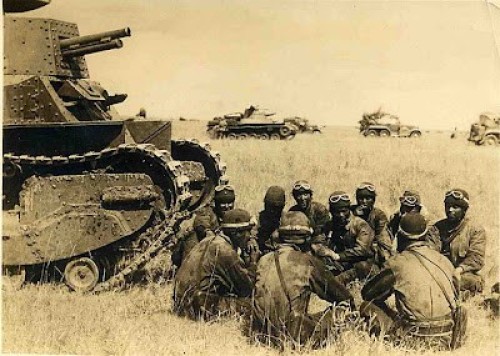
Above: Japanese tank crew rests during 1939 fighting against the Soviets near Mongolia. Roosevelt Provokes Japan
Why Did Japan Go to War with America?
The Decision to Base the Fleet at Pearl Harbor
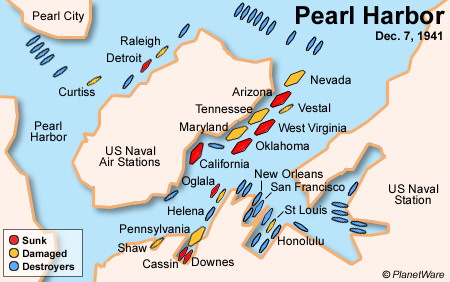
The False Flag Foreknown (1): “Magic”
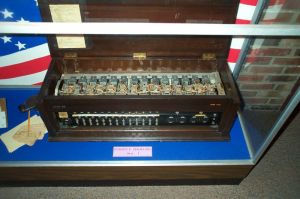
A U.S. Purple decoding machine The False Flag Foreknown (2): East Wind, Rain
The False Flag Foreknown (3): Personal Warnings
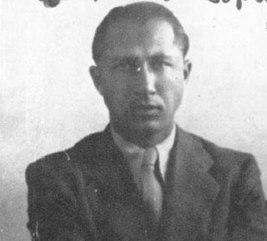
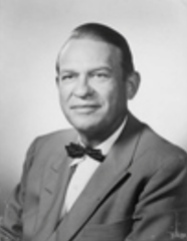
Thorpe (on the left); Popov; DiesThe False Flag Foreknown: (4) Naval Intercepts
Maximizing the Risks
Advance Damage Control: the “War Warning”
Strange Activity on December 7
The Coverup
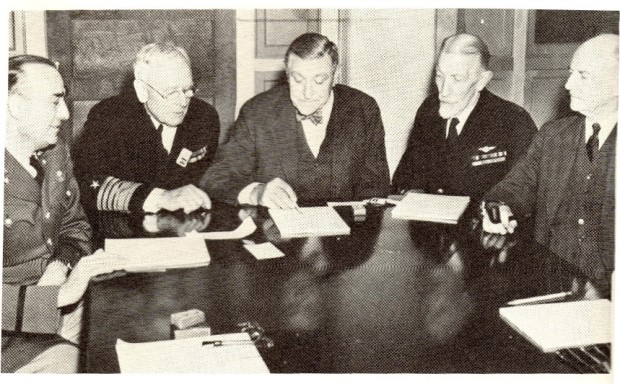
The Roberts Commission. L-R: McNarney, Standley, Roberts, Reeves, McCoy Their Day in Court
Damage Control
Congress Enters the Act
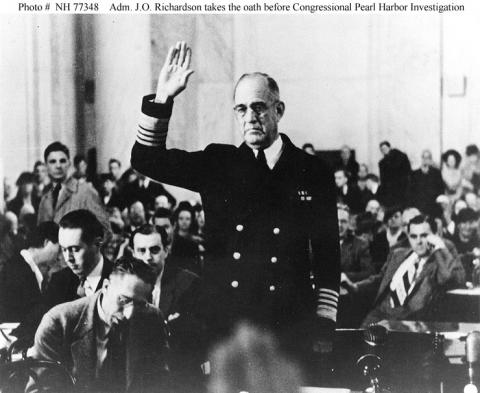
Admiral Richardson testifies before Joint Congressional Committee Collaboration Pays
Some postscripts
Pearl Harbor and 9/11
(36 images)Recommended Reading on Pearl Harbor
Notes
Post Comment Private Reply Ignore Thread
Top • Page Up • Full Thread • Page Down • Bottom/Latest
Begin Trace Mode for Comment # 6.
#1. To: Deckard (#0)
I see. We should have sat back and let the Germans and Japanese conquer whatever they wanted to conquer. And it was a "conspiracy" to resist them. We should even have helped the Nazis conquer the USSR. Nah. The way FDR did it turned out very well for us: we still effectively rule the world.
For what shall it profit a man, if he shall gain the whole world, and lose his own soul? Mark 8:36
#10. To: nativist nationalist (#6)
(Edited)
Nothing. Bur the way I see it, we not only have not lost our soul, we have made the world a better place, and continue to do so. America has brought peace. Not perfect peace, but real, sustained global peace. Even if it is in places a very cold peace, it's still peace. The same man you quoted also said "Blessed are the peacemakers, for they will be called children of God."
Top • Page Up • Full Thread • Page Down • Bottom/Latest
#6. To: Vicomte13 (#1)
Nah. The way FDR did it turned out very well for us: we still effectively rule the world.
Replies to Comment # 6. For what shall it profit a man, if he shall gain the whole world, and lose his own soul? Mark 8:36
End Trace Mode for Comment # 6.
[Home] [Headlines] [Latest Articles] [Latest Comments] [Post] [Mail] [Sign-in] [Setup] [Help] [Register]

